

Ben Zachariah
Video: Off-road battle for Beer O’Clock Hill has automakers scrambling
9 Hours Ago

News Editor
The redesigned Audi RS3 is ditching its Haldex all-wheel drive system and debuting a new RS Torque Splitter.
Audi has released information on the new system ahead of the official reveal of its hottest small car.
The new system allows for active and fully variable torque vectoring between the rear wheels.
It features an electronically-controlled multiple disc clutch on each drive shaft, with each clutch having its own control unit.
Up to 1750Nm of torque can be sent to the outer rear wheel.
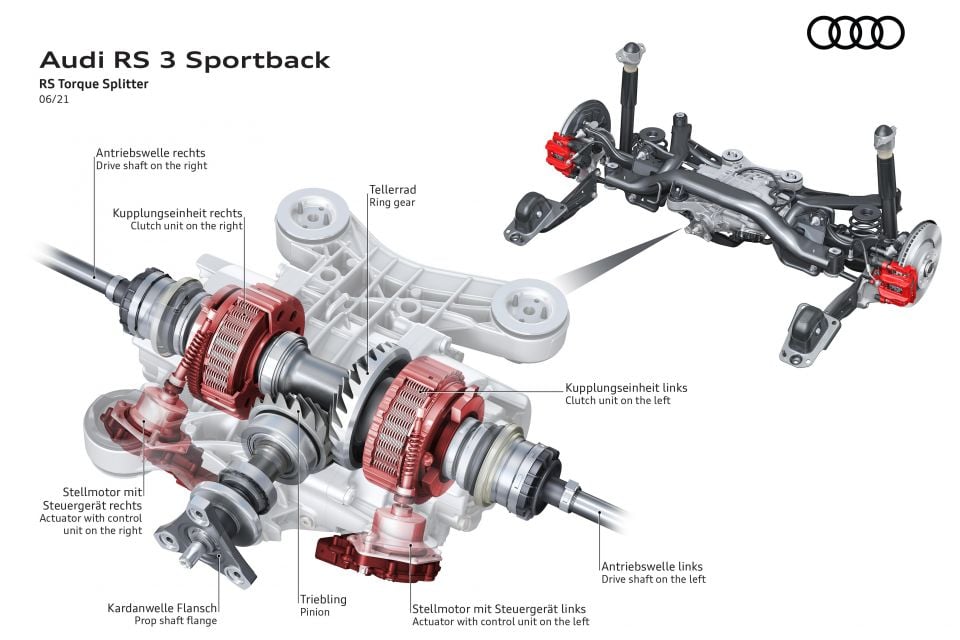
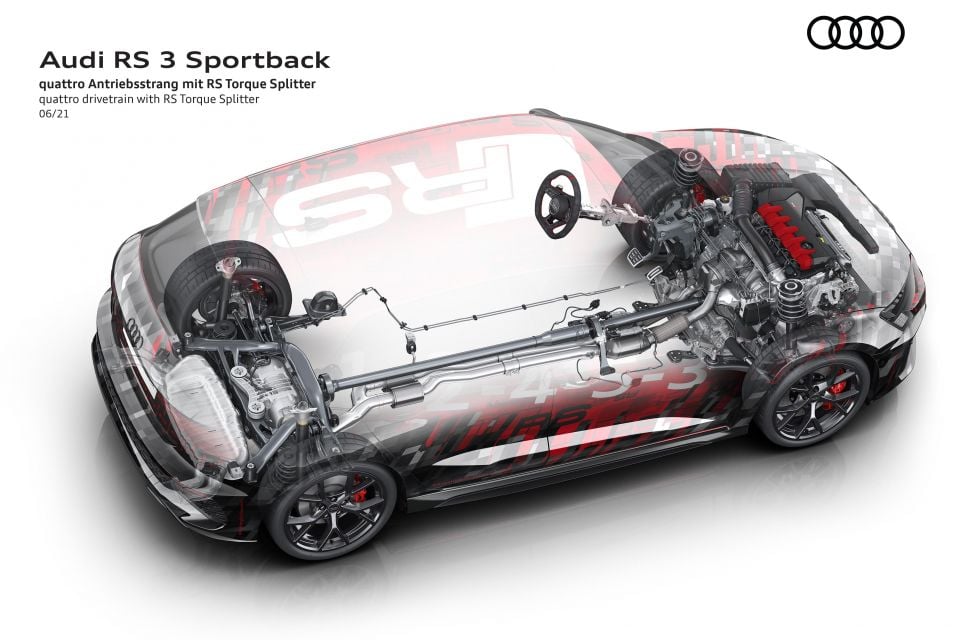
Audi says the introduction of the torque splitter results in less understeer, earlier and faster acceleration coming out of corners, and more precise and agile handling.
Two new drive modes join the existing Comfort, Auto, Dynamic, Efficiency and Individual modes, and torque distribution varies across the entire range of modes.
In Comfort mode, priority is given to the front axle. In Auto mode, torque distribution is balanced to help reduce understeer and oversteer, while in Dynamic mode more drive torque is sent to the rear axle.
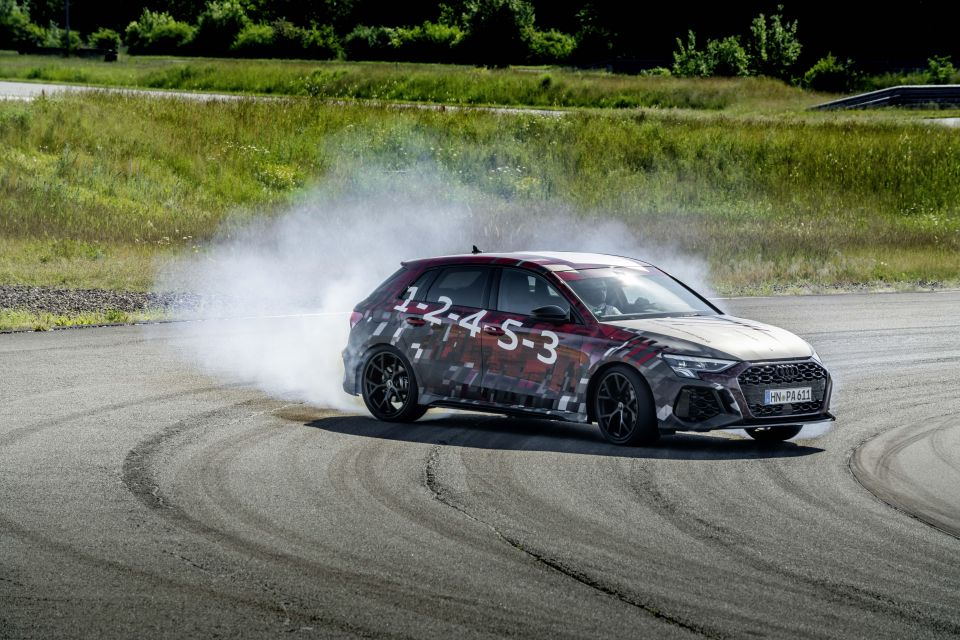
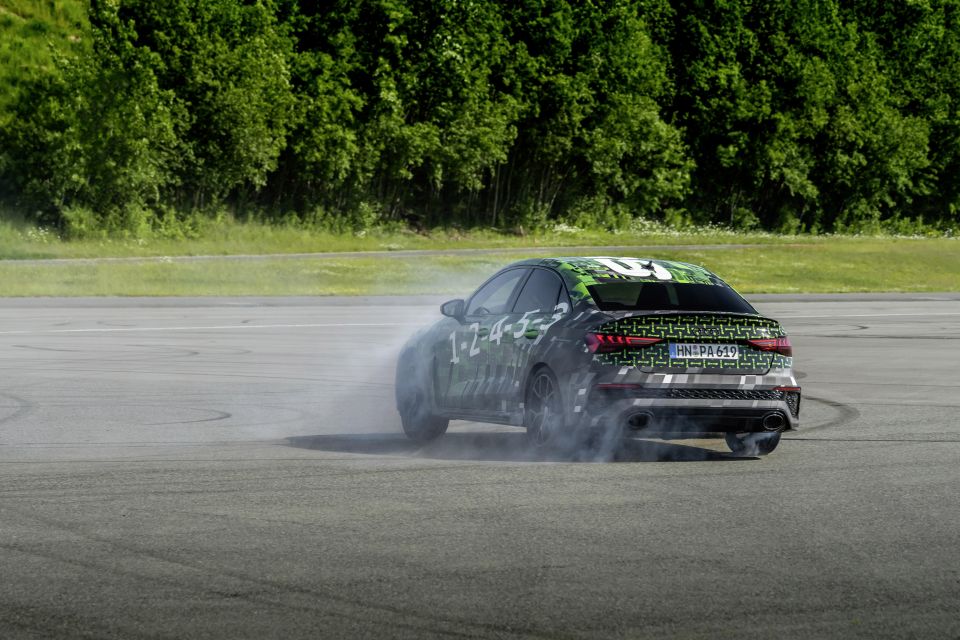
The new RS Torque Rear mode is what other brands would call Drift Mode.
Designed for closed circuits, in this mode up to 100 per cent of drive torque is directed to the rear wheel on the outside of a curve to help you perform controlled drifts.
The new RS Performance Mode has been designed for the racetrack and is tuned for the optional Pirelli P Zero Trofeo R semi-slick tyres.
The optional adaptive suspension features a specific comfort setting for RS Performance Mode, designed for race tracks with uneven surfaces like the Nordschleife.
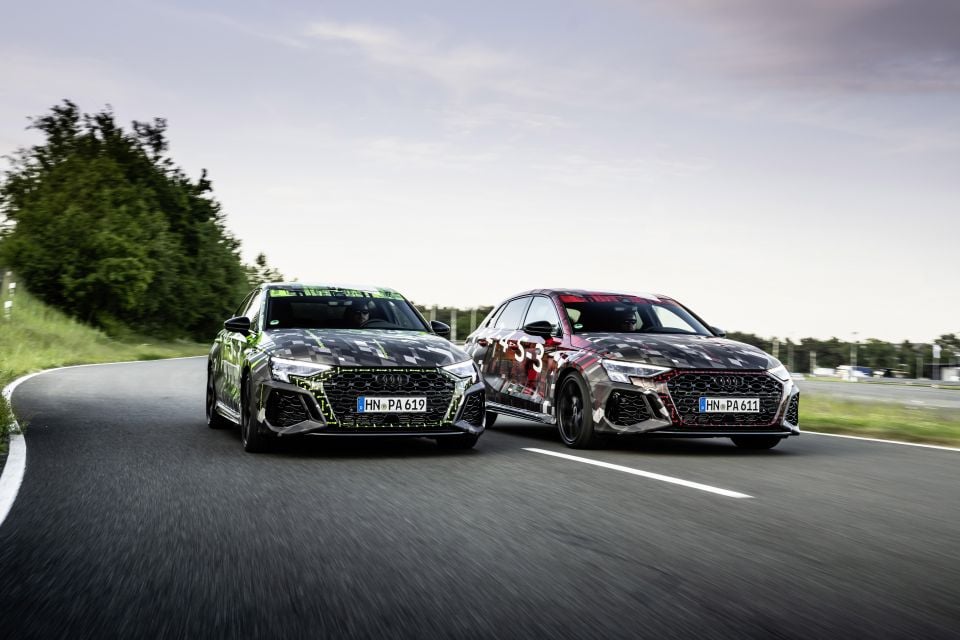
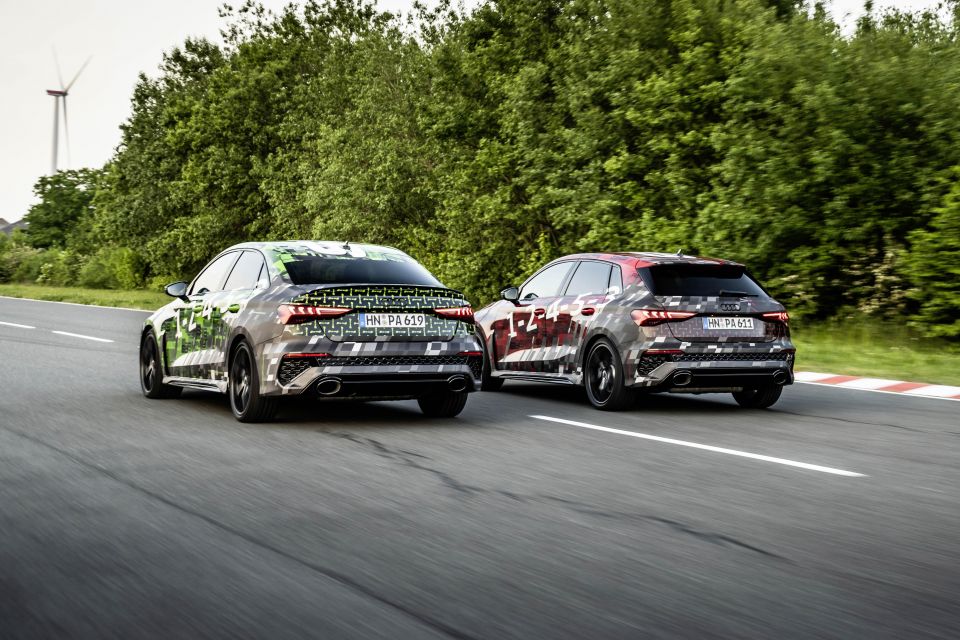
The standard RS sports suspension has newly developed shock absorbers and a valve system specific to the RS3.
The electronic stability control can be toggled on and off, while there’s also a Sport mode that is the default ESC calibration for RS Performance mode. To turn the ESC off entirely, you’ll need to hold the centre console button for more than three seconds.
The RS3 continues to use a turbocharged 2.5-litre five-cylinder engine with 294kW of power, mated to a seven-speed dual-clutch automatic transmission.
However, torque has been increased by 20Nm to 500Nm.
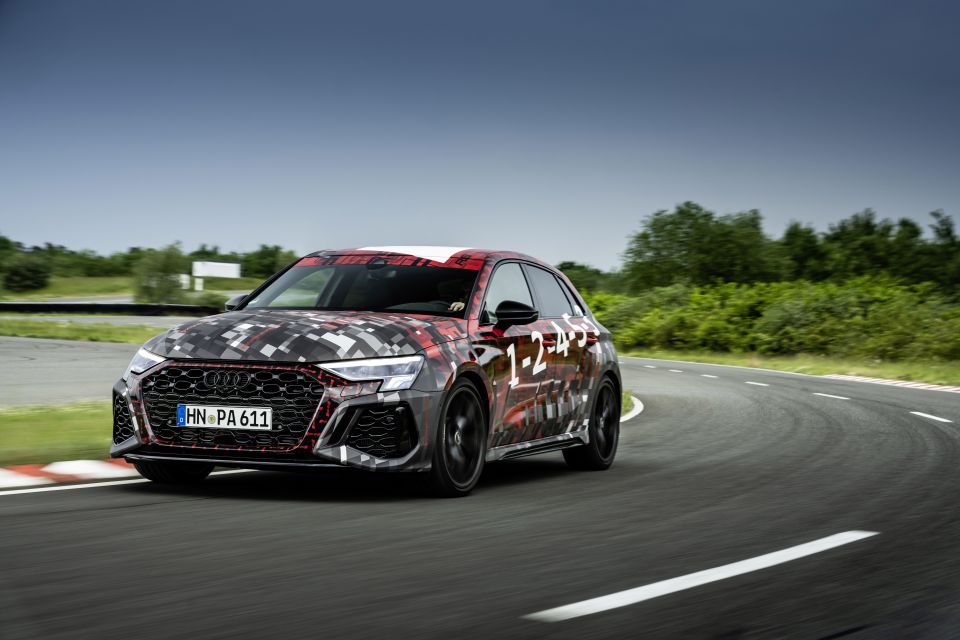
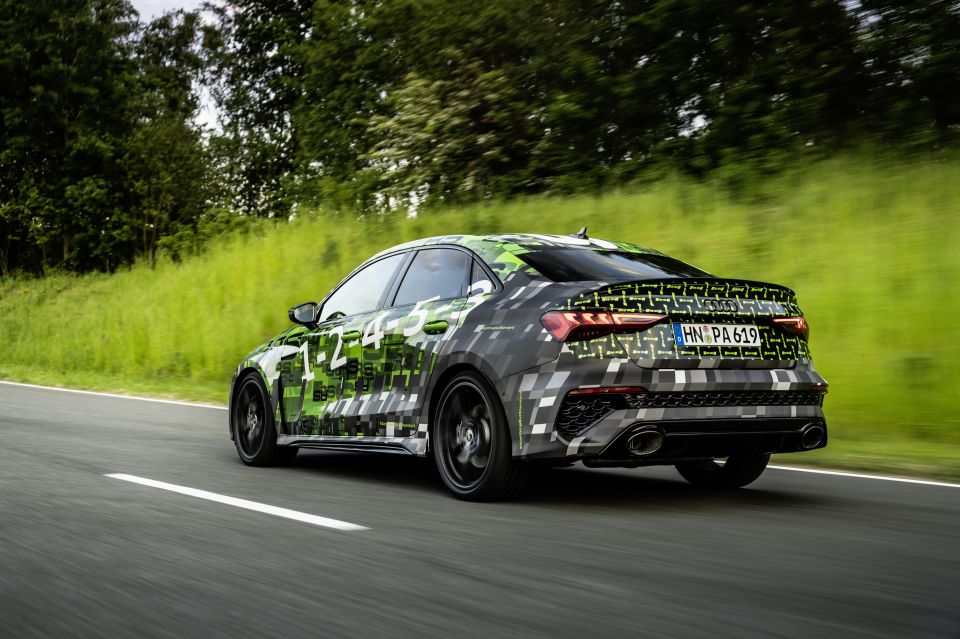
Peak power is now available from 5600 to 7000 rpm while peak torque is on tap from 2250 to 5600 rpm
The extra grunt helps push the RS3 to 100km/h in 3.8 seconds, 0.3 seconds faster than before.
The RS3 is 10mm lower than the S3 and 25mm lower than the A3.
Other changes over lesser A3 models include unique pivot bearings, subframes and stabilisers, and stiffer lower wishbones for the McPherson strut front suspension, plus bespoke progressive steering with a variable gear ratio depending on the steering angle.

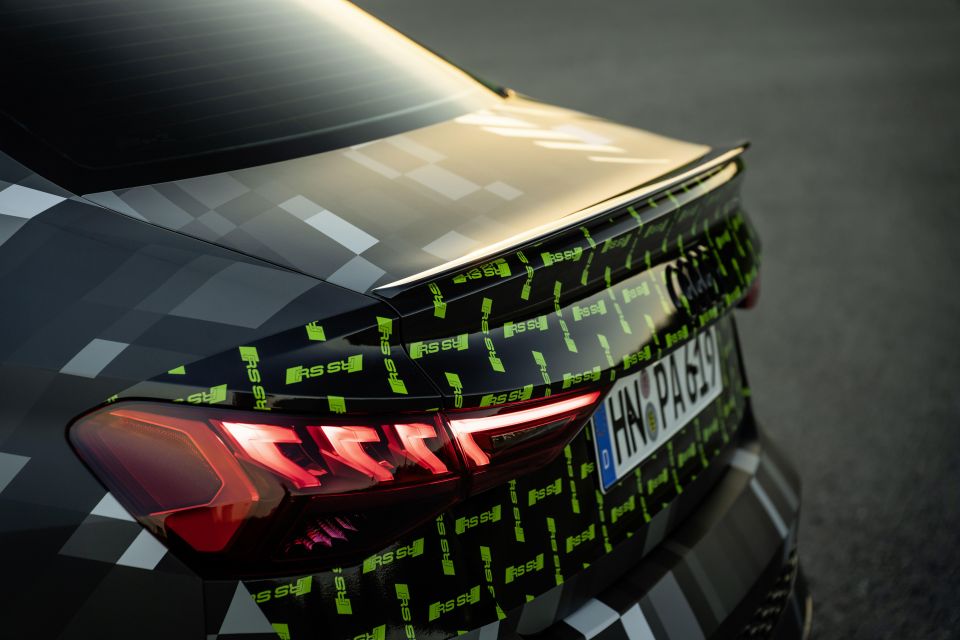
As before, the RS3 will offer the choice of four-door sedan and five-door hatchback body styles.
The introduction of torque vectoring helps align the RS3 with the redesigned Golf R (above), which features Volkswagen’s new R-Performance Torque Vectoring that allows up to 100 per cent of available torque to be transferred to the outside wheel during cornering.
The RS3’s toughest competition comes in the form of the Mercedes-AMG A45 S, which pumps out 310kW of power and 500Nm of torque from its turbocharged 2.0-litre four-cylinder engine.
Where expert car reviews meet expert car buying – CarExpert gives you trusted advice, personalised service and real savings on your next new car.
William Stopford is an automotive journalist with a passion for mainstream cars, automotive history and overseas auto markets.


Ben Zachariah
9 Hours Ago


CarExpert.com.au
17 Hours Ago


Damion Smy
1 Day Ago


Damion Smy
1 Day Ago


Damion Smy
2 Days Ago


Damion Smy
2 Days Ago